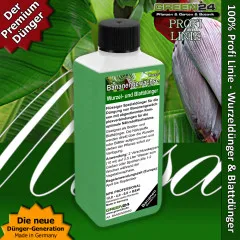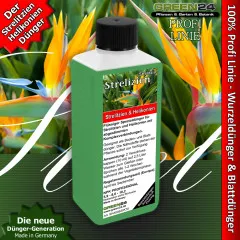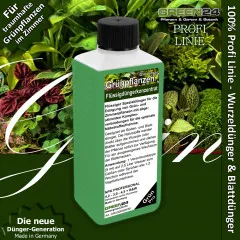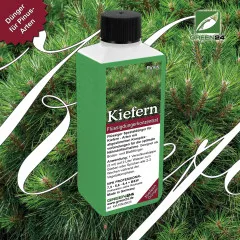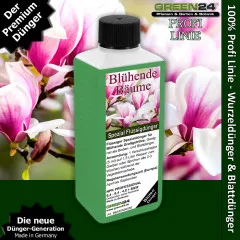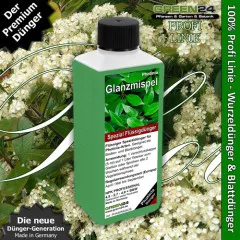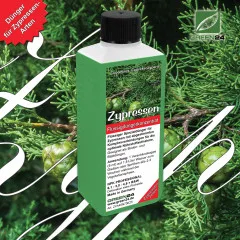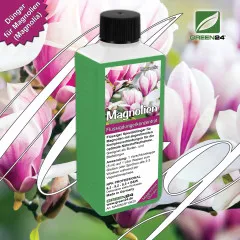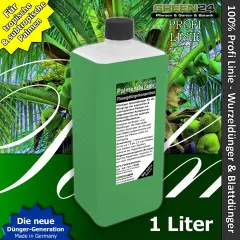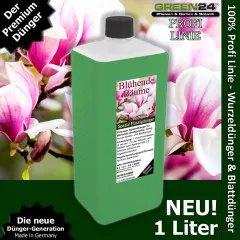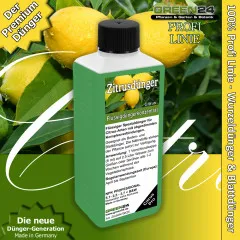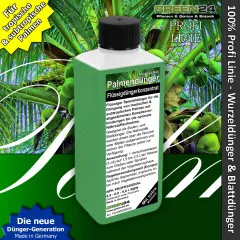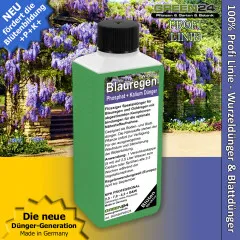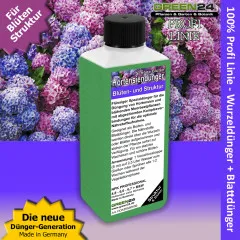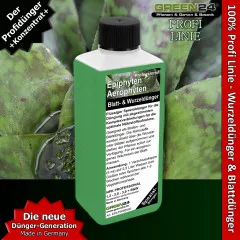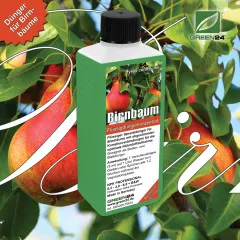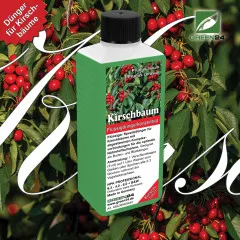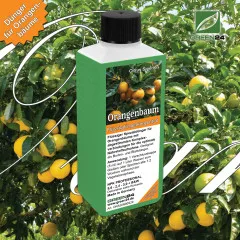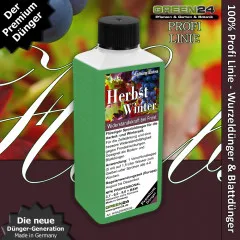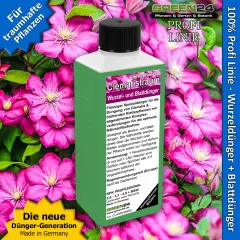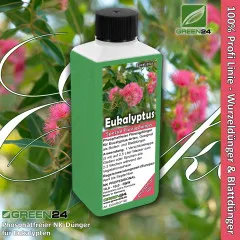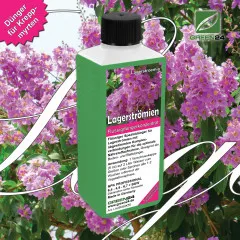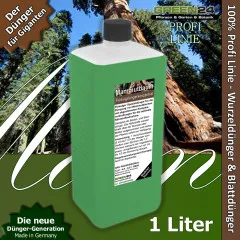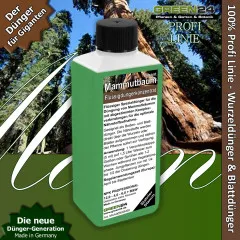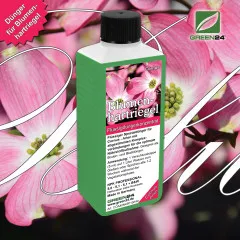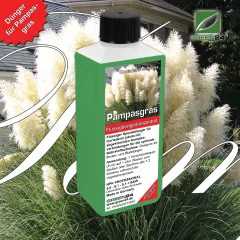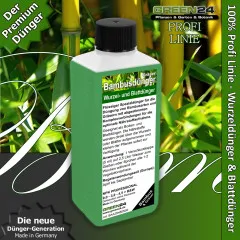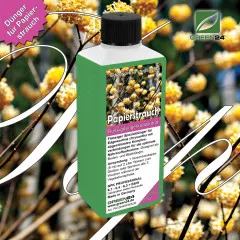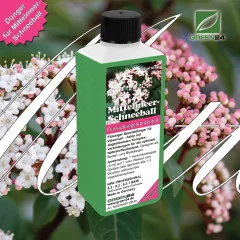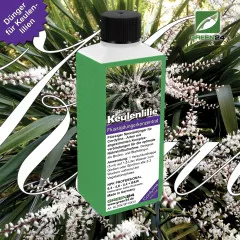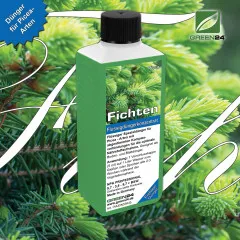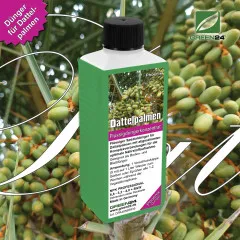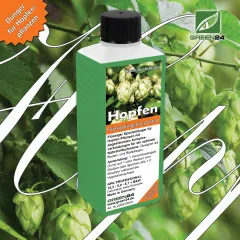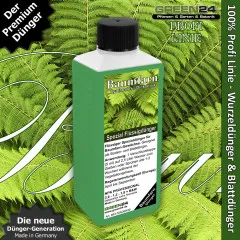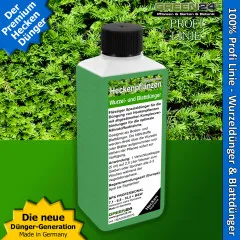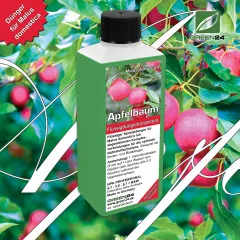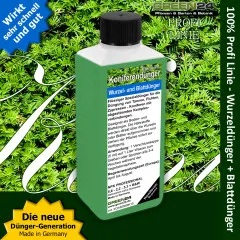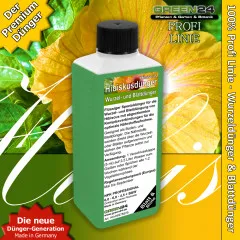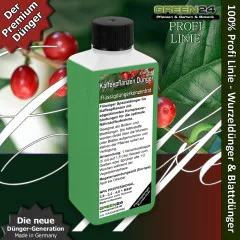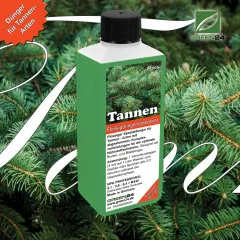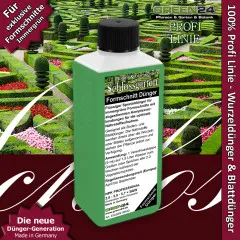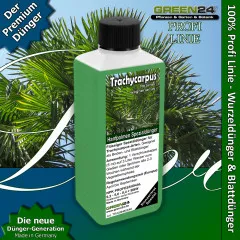Palm Dreams: GREEN24 Specialized Fertilizer for Trachycarpus Windmill Palms
Trachycarpus windmill palms are the embodiment of exotic elegance and delight with their unique winter hardiness, characteristic fan-shaped fronds, and robust, fiber-covered trunk structure. As the world's most winter-hardy palms, they bring authentic palm flair to every garden, patio, and conservatory. As demanding exotics, they require specially tailored nutrient supply to unfold their full majestic splendor and develop their legendary robustness. Our Trachycarpus Specialized Fertilizer is precisely tailored to these special needs.
Plant Profile: Trachycarpus Windmill Palms
- Family: Arecaceae (Palm family)
- Genus: Trachycarpus (Windmill Palm)
- Main Species: Trachycarpus fortunei, Trachycarpus wagnerianus
- Origin: Mountain regions of China, Himalaya, now cultivated worldwide
- Description: Fan palm with characteristic fiber-covered trunk
- Special Feature: World's most winter-hardy palm (down to -18°C)
- Important Species and Varieties:
- Trachycarpus fortunei (Chinese Windmill Palm):
- Classic Tessiner palm, up to 12m tall
- Large fan fronds up to 1.5m diameter
- Winter hardy to -15°C
- Fast growth, robust
- Trachycarpus wagnerianus (Wagner's Windmill Palm):
- More compact form, wind resistant
- Smaller, stiffer fronds
- Winter hardy to -18°C
- Ideal for windy locations
- Other Species:
- Trachycarpus martianus - Nepal Windmill Palm
- Trachycarpus takil - Kumaon Windmill Palm
- Trachycarpus princeps - Stone Palm
- Trachycarpus nanus - Dwarf Windmill Palm
- Trachycarpus fortunei (Chinese Windmill Palm):
- Growth form: Single-trunked fan palm, 3-12m tall
- Trunk: Covered with brown fibers, characteristic
- Fronds: Fan-shaped, deeply split, dark green
- Flowers: Yellow panicles, dioecious
- Fruits: Small blue berries (female plants only)
- Lifespan: Very long-lived, 50-100+ years
- Winter hardiness: -15°C to -18°C depending on species
- Uses: Specimen palm, container plant, conservatory, Tessiner gardens
The Science of Windmill Palm Nutrition
The Mountain Palm Formula for Authentic Trachycarpus Culture
Trachycarpus windmill palms have special nutrient requirements as mountain-dwelling fan palms with intensive frond formation for optimal development:
- Nitrogen (N) for Frond and Trunk Growth: Essential for characteristic large fan fronds and vigorous trunk growth. Nitrogen promotes photosynthesis and growth.
- Phosphorus (P) for Roots and Flowers: Central for root development and flower formation. Phosphorus supports energy metabolism and reproduction.
- Potassium (K) for Winter Hardiness: Critical for frost resistance, water balance, and cell stability. Potassium regulates winter hardiness and strengthens resistance.
- Calcium (Ca) for Trunk Stability: Essential for firm cell walls and trunk stability. Calcium improves the structural integrity of the palm.
- Magnesium (Mg) for Chlorophyll: Central atom of chlorophyll, important for photosynthesis and rich green frond color.
- Iron (Fe) for Frond Health: Prevents chlorosis and ensures rich green fronds. Iron deficiency is common in windmill palms.
- Manganese (Mn) for Enzyme Activity: Critical for metabolic processes and frond development. Manganese deficiency leads to growth disorders.
- Trace Elements: Zinc for growth hormones, copper for enzyme activity, boron for cell wall formation, molybdenum for nitrogen utilization.
- Complex Compounds: Chelated nutrients remain plant-available even in calcareous soil.
- Protein Metabolism Booster: Special compounds for optimal protein synthesis and frond construction.
- Carbohydrate Metabolism Optimizer: Promote energy production and storage for winter hardiness.
Application: Professional Care for Your Trachycarpus Windmill Palms
Root Feeding (Main Method)
- Dosage by Palm Size:
- Young windmill palms (up to 1m): 4-5ml concentrate per 3L water
- Medium palms (1-2m): 6-7ml concentrate per 2.5L water
- Large palms (2m+): 8-10ml concentrate per 3L water
- Container windmill palms: 5-6ml concentrate per 2L water
- Frequency by Season:
- Bud break (March-April): Every 5-10 days
- Main growth (May-August): Every 1-2 weeks
- Late summer (September): Every 2-3 weeks
- Autumn (October): Last fertilization before winter rest
- Winter rest (November-February): No fertilization
- Application: Water soil well before fertilizing, then distribute fertilizer solution evenly in root area
- Special note: Windmill palms are heavy feeders and require regular nutrient supply
Frond Spraying (Quick Help)
The characteristic large, fan-shaped fronds are excellent for spray feeding and enable rapid nutrient uptake.
- Dosage: 3-4ml per 1 liter of water
- Application: Spray fronds from both sides, especially with deficiency symptoms
- Frequency: Every 1-3 weeks in addition to root feeding
- Optimal times: Early morning hours or late evening hours
- Tip: Use lime-free water (rainwater) for optimal uptake
- Particularly effective: With frond damage or weak growth
Care Guide for Trachycarpus Windmill Palms
Location and Substrate
- Light: Full sun to partial shade, at least 4-6 hours sun
- Substrate: Well-draining, humus-rich, slightly acidic to neutral (pH 6.0-7.0)
- Drainage: Important, no waterlogging
- Wind protection: Protect young palms, older ones are wind resistant
- Winter protection: Trunk protection required depending on region
Planting and Repotting
- Planting time: Spring to early summer
- Planting hole: Double diameter of root ball
- Repotting: Every 2-3 years for container plants
- Substrate: Palm soil or well-draining garden soil
Special Features of Trachycarpus Windmill Palms and Their Uses
Winter Hardiness and Climate Adaptation
- Record winter hardiness: World's most winter-hardy palm
- Mountain climate adaptation: Natural adaptation to cool temperatures
- Frost protection: Trunk protection in severe winters
- Climate zones: Suitable for temperate climate zones
Garden Design with Windmill Palms
- Specimen palm: Impressive focal point in the garden
- Tessiner garden: Authentic South Swiss flair
- Container culture: Mobile palms for patios
- Conservatory: Year-round exotic atmosphere
Characteristic Features
- Fiber trunk: Characteristic brown fibers on trunk
- Fan fronds: Deeply split, fan-shaped fronds
- Flowers: Yellow panicles in spring
- Fruits: Blue berries on female plants
Seasonal Development
- Spring: New frond emergence, flower formation
- Summer: Main growth, frond unfolding
- Autumn: Fruit ripening, growth slowing
- Winter: Rest period, winter hardiness test
Problem Solving Through Targeted Nutrient Supply
Common Problems and Solutions
- Frond damage: Nutrient deficiency or frost damage → Intensive fertilizing, improve winter protection
- Slow growth: Nutrient deficiency or too cool location → Intensify fertilizing, choose warmer place
- Yellow fronds: Iron deficiency or waterlogging → Improve drainage, give chelated iron
- Brown tips: Drought or salt stress → Adjust watering, fertilize less
- Weak winter hardiness: Potassium deficiency or too late fertilizing → Potassium-emphasized fertilizer, stop earlier
- Trunk rot: Waterlogging or fungal infection → Improve drainage, apply fungicide
Effects of Optimal Fertilizing
- Fronds: Become large, rich green and characteristically fan-shaped
- Growth: Strong, healthy trunk with typical fiber structure
- Winter hardiness: Improved frost resistance through ripened tissues
- Resistance: Better resistance to diseases and stress
- Regeneration: Quick recovery after frond damage or frost
- Flowers: Richer flower formation with adequate nutrient supply
- Trunk stability: Robust, stable trunk structure
Modern Trachycarpus Culture
Garden Culture (Main Application)
- Site selection: Sunny to partially shaded location
- Soil preparation: Well-draining, humus-rich, nutrient-rich
- Planting: Spring to early summer
- Winter protection: Trunk protection required depending on region
Container Culture
- Pot size: At least 60-80cm diameter
- Substrate: Well-draining, nutrient-rich palm soil
- Overwintering: Frost-free, bright location or winter protection
- Mobility: Rolling platforms for large containers
Tessiner Garden Style
- Combination: With camellias, magnolias, rhododendrons
- Design: Natural stone walls, Mediterranean elements
- Microclimate: Prefer protected, warm locations
- Authenticity: Original Tessiner garden culture
Conservatory Culture
- Temperature: 5-15°C in winter optimal
- Light: Bright location, possibly additional lighting
- Humidity: Spray regularly
- Advantages: Year-round culture, faster growth
Metabolism Optimization for Windmill Palms
Protein Metabolism Support
- Amino acid synthesis: For vigorous growth and frond construction
- Enzyme activation: Optimized metabolic processes
- Stress resistance: Better adaptation to cold and environmental conditions
Carbohydrate Metabolism Promotion
- Energy production: Optimal photosynthesis performance
- Starch storage: Energy reserves for winter
- Winter hardiness: Sugar concentration as frost protection
Water Balance Regulation
- Osmotic regulation: Efficient water use
- Drought resistance: Better adaptation to water shortage
- Cell turgor: Stable, upright frond structure
Mandatory Application Instructions
- Mandatory observance of information sheet 130405! This can be found at URL https://www.green24.de/NPK.pdf
- Always observe the label!
- Do not apply undiluted.
- Shake well before use.
- Only apply during the growing season.
Safety Instructions
- Avoid contact with eyes, skin, and clothing.
- Do not inhale spray or spray mist.
- Keep away from food and beverages.
- Wash face and hands thoroughly after use.
- Official advisory recommendations take precedence.
- Fertilizers may leave stains on surfaces that may not be removable.
Storage
- Store dry, dark at +8°C to +40°C.
- Keep out of reach of children and animals.
- Fertilizer must not be introduced into water bodies or reach wastewater.
- With proper storage, stable for several years without quality loss.
- Use diluted fertilizer promptly.

